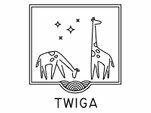FIRST TWIGA GPS NETWORK DEPLOYED IN UGANDA

TWIGA successfully established the first low-cost GNSS network in Africa, that will be used to continuously measure the amount of water vapor in the atmosphere. This information will allow improving forecasts of extreme weather events, such as cloudbursts and thunderstorms. GPS stations deployed at fixed locations can be used to measure the amount of water […]
Low-cost GPS for rain forecasts

GPS satellites provide users with data useful for positioning, navigation and Earth observation. GPS stations, deployed at fixed locations, are used mainly to monitor ground or structure movements. The same stations can be used also to measure the amount of water vapor in the atmosphere, which is a crucial parameter to improve weather forecasts. Several […]
Monitoring country-wide atmospheric water vapor in Uganda

The first TWIGA cost-effective GNSS stations were successfully deployed in Uganda in November 2019 by GReD, PoliMi, and TU Delft. Since then, they have collected raw GNSS data to monitor the amount of atmospheric water vapor, for meteorological applications. The stations were deployed nearby Kampala, forming a dense mesh capable of detecting spatial variations of […]
Using the South African GNSS network to monitor country-wide atmospheric water vapour

The South African GNSS network (TrigNet, website) counts 64 stations distributed all over the country, with inter-station distances ranging from 80 km to 300 km. The network provides users with data for both real-time and post-processing applications. An example of real-time service is the provision of RTK corrections to augment the positioning precision of the […]
Coping with ionospheric disturbances in sub-Saharan Africa for GNSS meteorological applications

At the end of 2019, TWIGA shipped 6 low-cost GPS stations to Uganda. These were deployed in and around Kampala by Makerere University, with the support of GReD, PoliMi, Makerere University, and TU Delft. The purpose was to derive estimates of tropospheric Zenith Total Delay (ZTD), a parameter useful for meteorological applications. The use of […]
Towards near real-time atmospheric water vapor monitoring in Africa

Water vapour content of the atmosphere lowest layer (up to about 15 km from the ground), which is known as troposphere or neutral atmosphere, affects GNSS satellite signals propagation velocities, causing delays in their observation from ground-based stations. Based on a proper analysis of such data, one can quantify this delay and therefore have an […]

